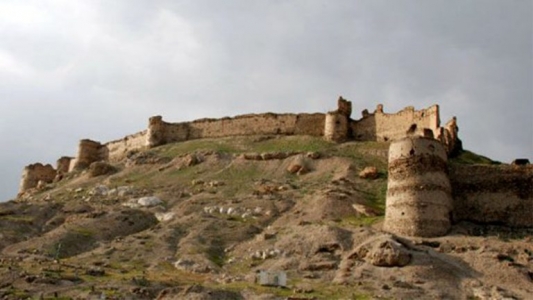Bala Hissar — the ancient citadel of Kabul that AKTC & India is helping Afghanistan to restore 2020-11-01
India signed an MoU with Afghanistan in August for restoration of Bala Hissar fortress, pledging approximately $1 mn. Aga Khan Trust for Culture plans to compete project by 2022.
New Delhi: The restoration work of ancient fortress Bala Hissar in Afghanistan’s Kabul, which received financial aid from the Government of India in August, has started. The fortress is being converted into the country’s first archaeological park.
The Aga Khan Trust for Culture (AKTC) Afghanistan, which is executing the project, plans to complete the work by 2022.
Ajmal Maiwandi, CEO of AKTC Afghanistan, told ThePrint that the archaeological park will be Kabul’s largest public green space.
On 25 August, Indian Ambassador to Afghanistan Vinay Kumar and diplomatic representative of the Agha Khan Development Network, Sheherazade Hirji, signed a memorandum of understanding (MoU) for the restoration of the 65-hectare site. Afghanistan President Ashraf Ghani was also present on the occasion.
India pledged approximately $1 million to the project and said it was committed to preserving the cultural heritage of Afghanistan.
At the signing ceremony, Ghani had said, “I think it would be a very good symbol for restoration of the city — for revitalisation…in the hope of a Kabul that will again be the centre for stability…”
Speaking to ThePrint last week, Maiwandi said, “Financial support from the Government of Indian has enabled AKTC to significantly ‘scale-up’ ongoing efforts to consolidate and safeguard severely damaged sections of fortification at the Bala Hissar citadel.”
Bala Hissar, also known as the Citadel of Kabul, is an ancient fortress situated in the south of the old city of Kabul in Afghanistan.
Built around the fifth century AD, it was originally the royal palace of the Durrani Empire.
“The Bala Hissar was the royal, military and administrative heart of Kabul for a significant period,” noted Alison Gascoigne, David Thomas and Fionna Kidd, authors of ‘In the Trenches: Rescue Archaeology at the Bala Hissar, Kabul’.
A necessary stop on the historic trade route Silk Road, and a stronghold for the Mughals and the British empire, Bala Hissar holds both historic and geo-strategic importance.
It also occupied a prominent position overlooking the city, and was once an important site during the two Anglo-Afghan wars fought in the 19th century. Several walls and sections of the historic site have fallen to ruin and in recent years, it was used as an active military base for the Afghan National Security Forces.
According to Maiwandi, the historic site was officially transferred to the Ministry of Information and Culture in 2012, from the Ministry of Defence.
The two-year project aims to complete structural consolidation work on all sections of above-ground structures by the end of 2022. While the work started in the middle of the pandemic, Maiwandi said all necessary precautions are being followed.
“The pandemic will have little direct effect on the implementation of the project in the long-term,” he said, adding that most project activities occur in open areas with sufficient facility for social distancing and other health provisions.
According to the AKTC, the funding provided by the Government of India is for Phase-I activities, which includes safeguarding the remaining heritage value of the site.
The project aims to restore historic structures, including stone and fired brick fortifications, large buttresses and segments of tiled decoration. This is to retain the authenticity of the fortress’ original architecture and building techniques.
Future work will include extensive archaeology, landscaping and establishment of essential visitor facilities.
A wide range of conservation experts, archaeologists, architects and surveyors are working on the project, besides technicians and de-miners, who are required to carefully remove vast amounts of unexploded ordnance (artillery) from the former military base.
Several hundred labourers, craftsmen and young university students will also be engaged in the project as it progresses, Maiwandi told ThePrint.
This is not the first time India and Afghanistan have worked together to restore a historical site. The two countries jointly worked on the restoration of Kabul’s Stor Palace, also known as the Qasre Storay, which was inaugurated in 2016.
- 2501 reads
 Ismaili.NET - Heritage F.I.E.L.D.
Ismaili.NET - Heritage F.I.E.L.D.